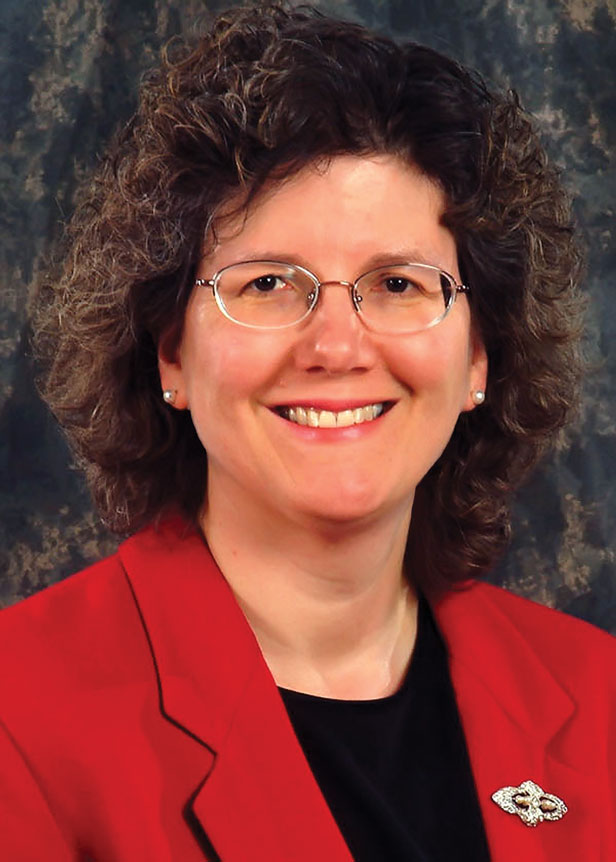
Susan Landahl, COO and senior vice president at Exelon Nuclear in Warrenville, Illinois, has operational responsibility for roughly 20 percent of all U.S. nuclear power generating capacity—17 nuclear plants in three states, with total capacity of about 18 gigawatts. The job, which requires a mix of technical, management, communication, and operational skills, embodies one of the grand challenges of engineering: making a complex system dependable. After all, the plants she manages are a daily resource for millions of people.
Landahl gravitated to the nuclear field in high school—“partly because the technology sounded great,” she says, and partly because she observed radiation treatment when both her father and brother had cancer: “I was fascinated by the technology itself, seeing both the positive and negative aspects of it as I watched my family members go through radiation therapy.”
Later, at MIT, her five-year co-op program at the Department of Nuclear Science and Engineering (NSE) gave her hands-on experience outside the Institute, and she became the first NSE master’s student to have a concentration in health physics, through a joint program with the Harvard School of Public Health.
This combination of nuts-and-bolts engineering and health physics, which focuses on protecting people from the hazards of radiation, “definitely influenced my career,” says Landahl. “Understanding the impact of radiation has really helped me, both in operations and in communicating with the public.”
When Landahl earned her senior reactor operator license, in 1998, she was one of very few women in the country to have achieved that status, and she is still an unusual presence in the male-dominated nuclear and utility fields. She says this has proved to be an advantage. “Everyone remembers you,” she explains.
Another thing working in her favor is that her time at MIT taught her “how to think and how to solve problems methodically,” she says. “I’m very confident that if I don’t know something, I know how to go figure it out—to reference the right data, talk to the right people, put the right people together.”
Landahl, an active mentor in her field, says this is a good time to go into the industry because an earlier generation of engineers is approaching retirement, a new U.S. plant is under construction for the first time in years, and nuclear power is becoming more economical. “The best thing I can do is to make sure the plants keep running safely and well,” she says. “That’s my focus.”
Landahl’s husband, Dave, is a stay-at-home dad and active volunteer who serves as a director of the Green Harvest Food Pantry near their hometown of Channahon, Illinois. Their daughter, Michelle, is a high-school junior preparing for a career in medicine.
Keep Reading
Most Popular
Large language models can do jaw-dropping things. But nobody knows exactly why.
And that's a problem. Figuring it out is one of the biggest scientific puzzles of our time and a crucial step towards controlling more powerful future models.
How scientists traced a mysterious covid case back to six toilets
When wastewater surveillance turns into a hunt for a single infected individual, the ethics get tricky.
The problem with plug-in hybrids? Their drivers.
Plug-in hybrids are often sold as a transition to EVs, but new data from Europe shows we’re still underestimating the emissions they produce.
Stay connected
Get the latest updates from
MIT Technology Review
Discover special offers, top stories, upcoming events, and more.